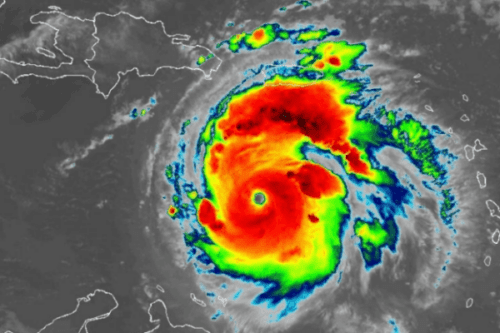Paris, France (AFP) – UN climate chief Simon Stiell has warned that the destructive consequences of global warming are “not a tomorrow problem” after Hurrican Beryl swept across several Caribbean islands.
Stiell hails from the island of Carriacou which took a direct hit early Monday as Beryl barrelled through, dumping heavy rain and unleashing devastating winds.
His late grandmother’s home was among those destroyed while his parents’ property also suffered damage, Stiell’s office said.
Beryl has strengthened into the earliest category 5 storm in the Atlantic on record, according to the US National Hurricane Centre (NHC) and the World Meteorological Organization (WMO), and is hurtling toward Jamaica.
Stiell said whether the hurricane in his homeland or floods and heatwaves elsewhere in the world, climate change was “pushing disasters to record-breaking new levels of destruction”.
“This is not a tomorrow problem,” the executive secretary of the UN Framework Convention on Climate Change said late Monday.
“This is happening right now in every economy… disasters on a scale that used to be the stuff of science fiction are becoming meteorological facts, and the climate crisis is the chief culprit.”
The NHC said Carriacou bore the brunt of the storm’s “extremely dangerous eyewall” that brought sustained winds at upwards of 150 mph (240 kph).
Grenada’s Prime Minister Dickon Mitchell said the island was “flattened” in half an hour and that it wasn’t clear yet if anyone had been killed in the trail of destruction.
Stiell said the “colossal climate costs” inflicted by natural disasters had now reached the level of a national security threat “from the smallest islands to the biggest G20 economies”.
Wealthy nations have agreed to pay $100 billion annually to help the developing world adapt to climate change and switch to clean energy but experts say trillions will be needed in the years to come.
It is expected a new finance target will be set at the UN COP29 summit in Azerbaijan in November, though divisions over the size and scope of that goal have frustrated negotiations.
bl-np/chf/ach
© Agence France-Presse
Featured image: Hurricane Beryl – July 2024 Credit: NOAA Goes East satellite




